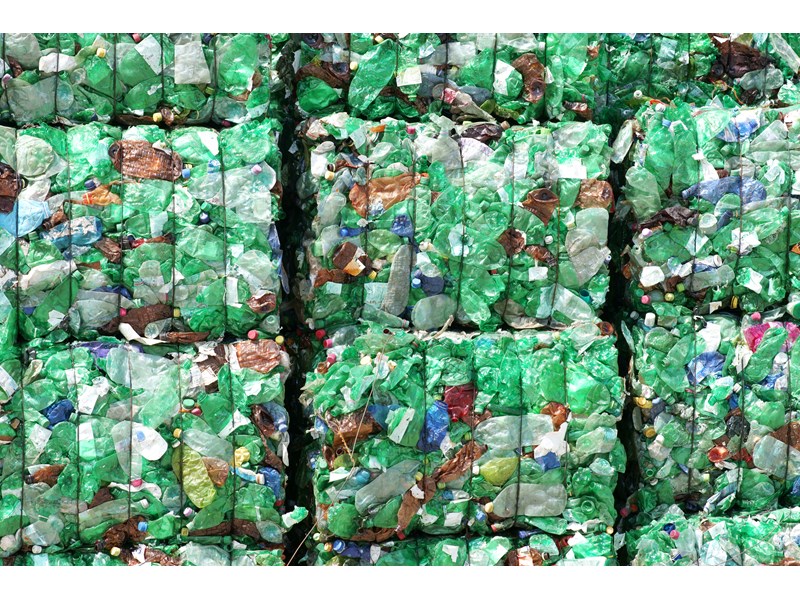Discuss your challenges with our solutions experts
Will the RPET market flourish with the UK's new deposit scheme?
Only half of the PET bottles used in the UK each year are recovered for recycling
1 minute read
It may come as a surprise to learn that 56% of PET bottles used in the UK each year are recovered for recycling. That figure is projected to rise to 59% by 2021, but could increase significantly with the introduction of the UK government’s proposed deposit return scheme. Elsewhere in Europe, similar schemes have achieved ~90% recovery rate.
While this would be good news for environmental lobbyists, it would be great news for the UK’s reclamation industry. Collecting PET bottles via a deposit scheme can result in a much higher quality stream of recovered PET as a deposit system helps to eliminate the issue of contamination from content residue which is often a problem with traditional kerbside collection.
With a deposit system, you have less to deal with. The contamination is minimal and the recovered material is already sorted into discreet streams by material, polymer and colour.
Will we see a change in PET bale quality?
For the first time in the UK, it will be possible to obtain a high quality, pure, clear PET bale. In the current collection system, bales typically comprise of two polymers: PET and high-density polyethylene (HDPE), and the reclamation industry must pay for bales to be pre-sorted to achieve any acceptable quality for reprocessing.
Up until now, UK reclaimers have invested heavily in sorting ,as bales have been of such mixed and low quality.
“A deposit system will offer the market the highest quality PET bale achievable anywhere in Europe, and that’s not been available within the UK recovery stream to date.”
Targeting the ‘on the go’ market
While a PET deposit scheme offers new opportunities for increasing recovery rates in the UK, there is some debate that it could potentially detract from the success of the current recovery system. Namely, removing the high value recyclables from the kerbside collection and, in effect, devaluing the system and impacting revenues of local authorities.
The UK has a very effective kerbside collection system in recovering PET, in terms of volumes if not quality. With this in mind, the focus of the deposit system should be on capturing those bottles not currently going into the existing system – essentially the 'on-the-go' beverages where consumers dispose of the container close to point of purchase. This is the PET that is most likely to end up as litter and an environment pollutant.
Replicating success from other parts of the world
Deposit schemes for PET are already in operation around the world. Deposit schemes usually work by refunding a small fee, paid at the time of purchase, to the consumer at automated collection points – often located in supermarkets and convenience stores.
The convenience of these collection points, often using ‘reverse vending machines’, will be vital to the schemes success. Smaller retailers will also have a role to play, with corner shops potentially required to take, and return the deposit on, PET bottles.
Where the deposit fee has been deemed too small, there has been limited success, as consumer motivation, and therefore participation, was low.
Waste, in general, is not a glamourous subject but "plastic the polluter" headlines have made it an emotive issue and pushed the topic up the agenda for governments and packaging brands alike. To create change there has to be a will with real commitment from government, consumers and the supply chain.
How can packaging producers use their brand to promote recovery and recycling?
There are no government mandates or incentives in the UK for the use of recycled content in packaging. Instead, industry (brands) set their own targets. It is now recognised that to achieve those targets, brands must play their part in promoting responsible disposal of packaging and boosting collection activity to increase the material supply into the chain.
It’s all interlinked – if brands want to use more recycled material and see a greater supply in the market, they need to collaborate with all aspects of the supply chain and ultimately use their brands to communicate and motivate consumers with regards to recycling.
A renewed focus on designing packaging for recycling would also be beneficial. There are agreed guidelines for PET, set by industry associations, but these are voluntary at present and more commitment to these by packaging producers could result in a material change in the quality of the PET waste stream.
How can governments encourage future investment in reclamation capacity?
The consultation around the UK deposit return scheme continues. It is slated the scheme could be introduced in 2019, but it is unlikely that such a complex scheme will be agreed, designed and implemented within such a short timeframe.
The deposit return scheme is one approach to developing a high-quality recovery stream for PET, but beyond beverage bottles there's much more to be done in improving the circularity of resources.
Recent Coverage: Is the proposed ban on plastic drinking straws a good idea?
In a recent City AM debate Helen shares her views on why the proposed ban on plastic drinking straws is a good idea.






